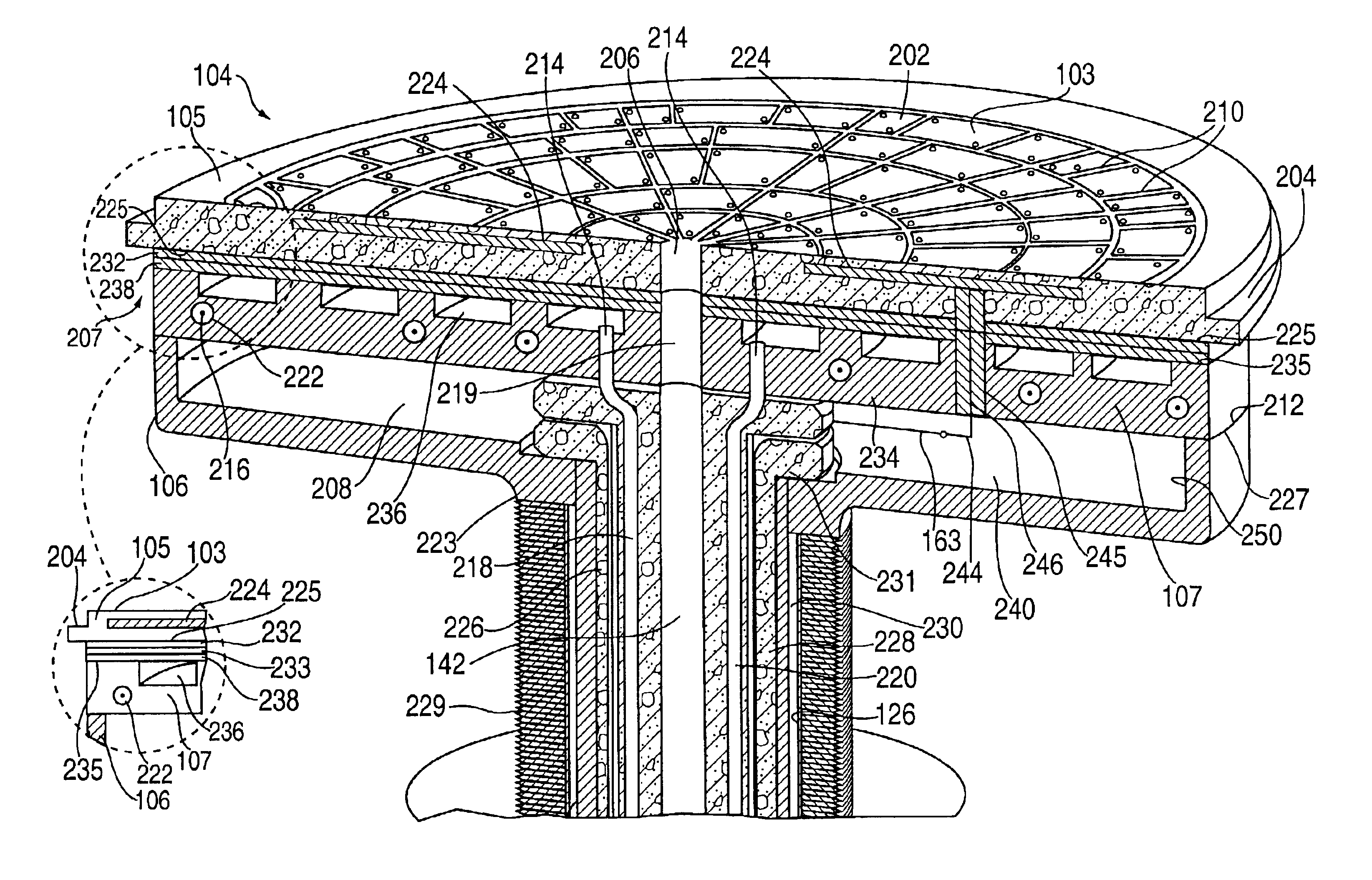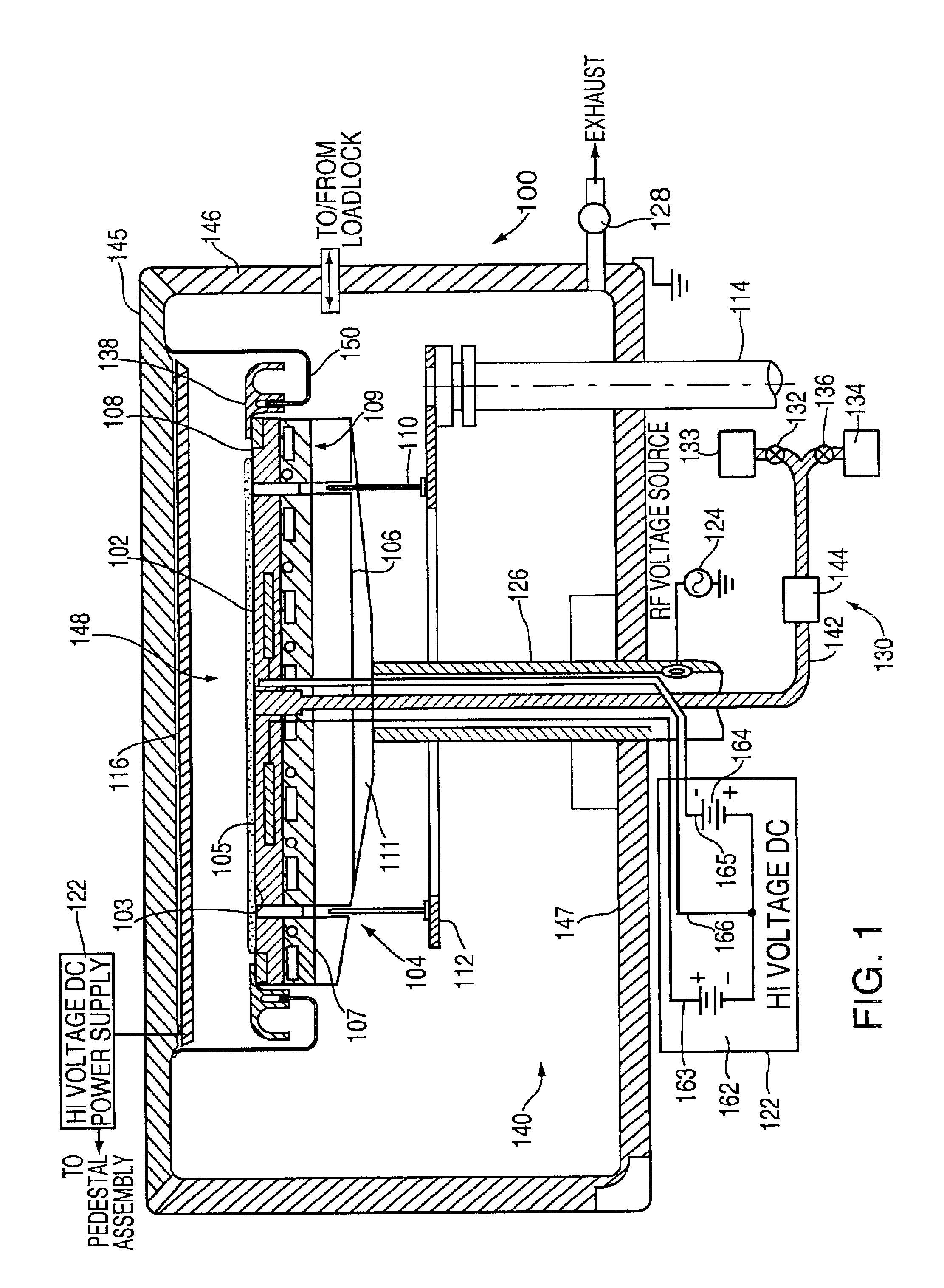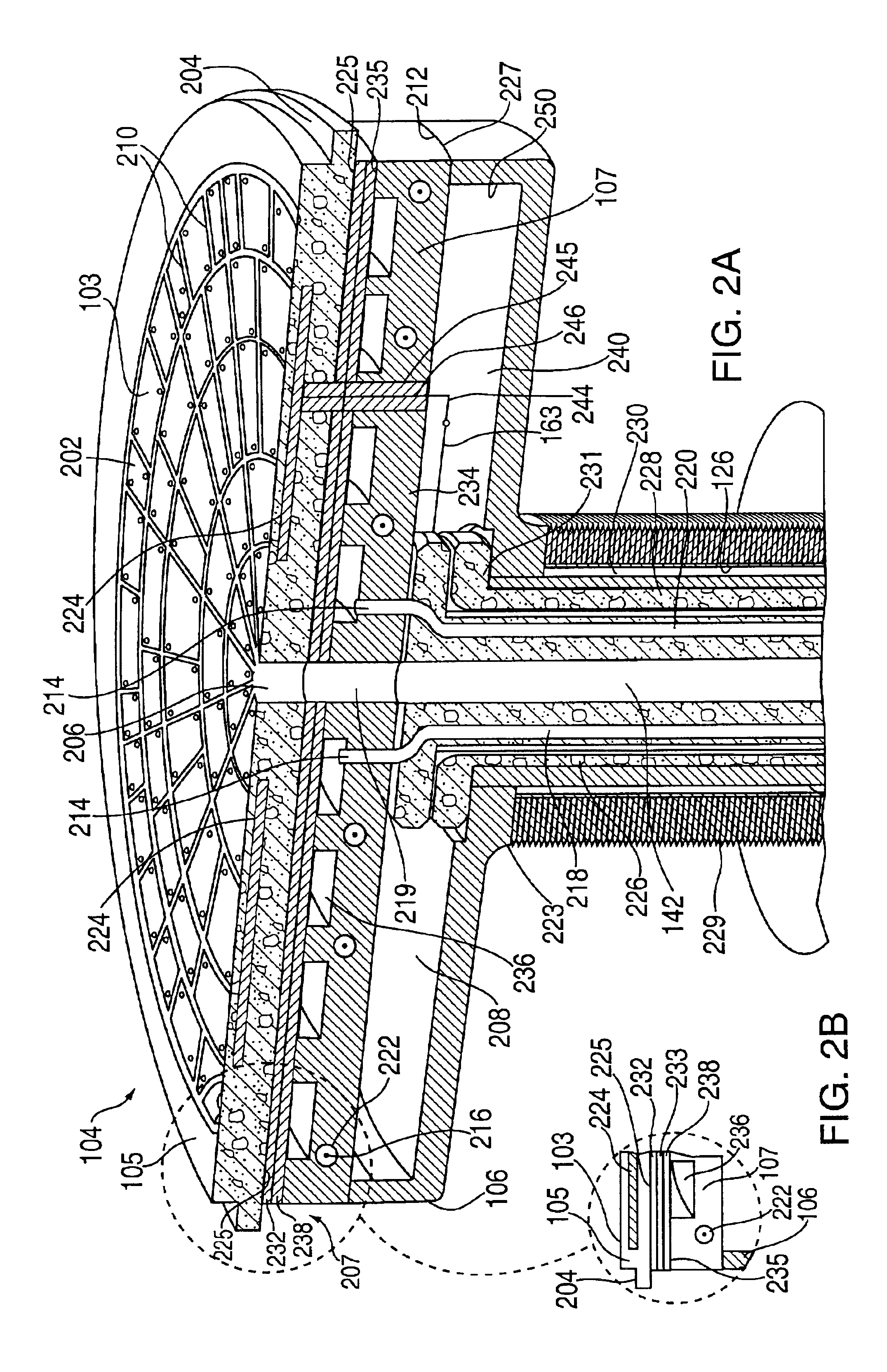Full area temperature controlled electrostatic chuck and method of fabricating same
a technology of electrostatic chuck and full area temperature control, which is applied in the direction of soldering apparatus, lighting and heating apparatus, domestic cooling apparatus, etc., can solve the problems of deformation of the puck and the cooling plate, the size of the wafer and the smaller device size, and the set of production problems
- Summary
- Abstract
- Description
- Claims
- Application Information
AI Technical Summary
Benefits of technology
Problems solved by technology
Method used
Image
Examples
first embodiment
In the invention depicted in FIG. 2, the cooling plate 107 is fabricated from a material such as zirconium or its alloys, or KOVAR®. KOVAR® is the trade name for an iron / nickel / cobalt alloy originally manufactured and sold by Westinghouse Electric Co. Additionally, the cooling plate 107 may be plated (e.g., nickel plating) to prevent oxidation of the cooling plate material.
The cooling plate 107 and electrostatic chuck 105 are low temperature brazed together, using for example an aluminum alloy brazing material, to allow for full area temperature control as beneath the top surface 103 of the chuck 105. Low temperature brazing occurs in a temperature range of 110° C. to 660° C. Brazing at temperatures above 660° C. is considered high temperature brazing. Furthermore, such low temperature brazing provides a hermetic seal as between the electrostatic chuck 105 and the cooling plate 107, which helps maintain the vacuum environment in the processing area from the atmospheric environment w...
third embodiment
In a third exemplary embodiment, the cooling plate 107 is fabricated from aluminum nitride (AlN). The cooling plate 107 is illustratively manufactured from “green tapes” of aluminum nitride, which are layered and configured to form the body 234 of the cooling plate 107 with the cooling channels 236 defined therein. Once the cooling plate 107 is formed, the cooling plate 107 is densified (e.g., sintered, hot pressed and the like). As such, a top plate 238 is not required in this Moreover, the transition layer 233 is not required where an AlN electrostatic chuck 105 is disposed over the AlN cooling plate 107 and low temperature brazed thereon. The transition layer 233 is not required since the coefficients of thermal expansion for the cooling plate 107 and electrostatic chuck 105 are approximately the same. Moreover, the metalization layer 232 is required on both surfaces of the aluminum nitride cooling plate 107 and chuck 105. Additionally, a person skilled in the art will recognize...
PUM
| Property | Measurement | Unit |
|---|---|---|
| diameter | aaaaa | aaaaa |
| size | aaaaa | aaaaa |
| temperatures | aaaaa | aaaaa |
Abstract
Description
Claims
Application Information
 Login to View More
Login to View More - R&D
- Intellectual Property
- Life Sciences
- Materials
- Tech Scout
- Unparalleled Data Quality
- Higher Quality Content
- 60% Fewer Hallucinations
Browse by: Latest US Patents, China's latest patents, Technical Efficacy Thesaurus, Application Domain, Technology Topic, Popular Technical Reports.
© 2025 PatSnap. All rights reserved.Legal|Privacy policy|Modern Slavery Act Transparency Statement|Sitemap|About US| Contact US: help@patsnap.com



